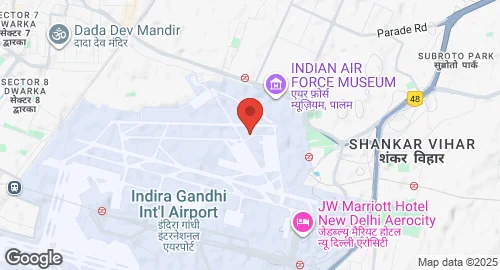Palam AFS
Summary
| Operating Country | 🇮🇳 India |
| Location | 🇮🇳 India |
| Status | ◉ Active |
| Usage | Dual |
| Year built | 1962 |
| Operating Organization | Indian Air Force |
Description
Indira Gandhi International Airport, also known historically as Palam Airport, is the primary international airport serving New Delhi, India. It was originally established by the British Raj as a base for the Royal Indian Air Force during World War II to support Allied military operations in Asia. After Indian Independence, the airport was taken over by the Indian Air Force. In 1962, commercial passenger operations were relocated to Palam Airport, and it was later renamed Indira Gandhi International Airport in 1986. The airport was operated by the Indian Air Force before its management was transferred to the Airports Authority of India, and subsequently to Delhi International Airport Limited (DIAL) in May 2006, a consortium led by the GMR Group. The airport has four near-parallel runways: 11R/29L (4,430 m × 60 m), 11L/29R (4,400 m × 45 m), 10/28 (3,813 m × 46 m), and 09/27 (2,816 m × 45 m). The 09/27 runway was the airport's first, constructed by the British in the pre-independence era and used during World War II. The airport is equipped with CAT III-B ILS. In July 2023, a 4,400 m runway and the Eastern Cross Taxiways (ECT) were inaugurated. The airport serves as a major hub for several Indian carriers and handles both civilian and military flights, including VVIP movements. In September 2020, India's first general aviation terminal for private jets was commissioned at the airport. While primarily a civilian airport, its historical military origins and continued use for VVIP and some military-related movements highlight its dual-use nature.
